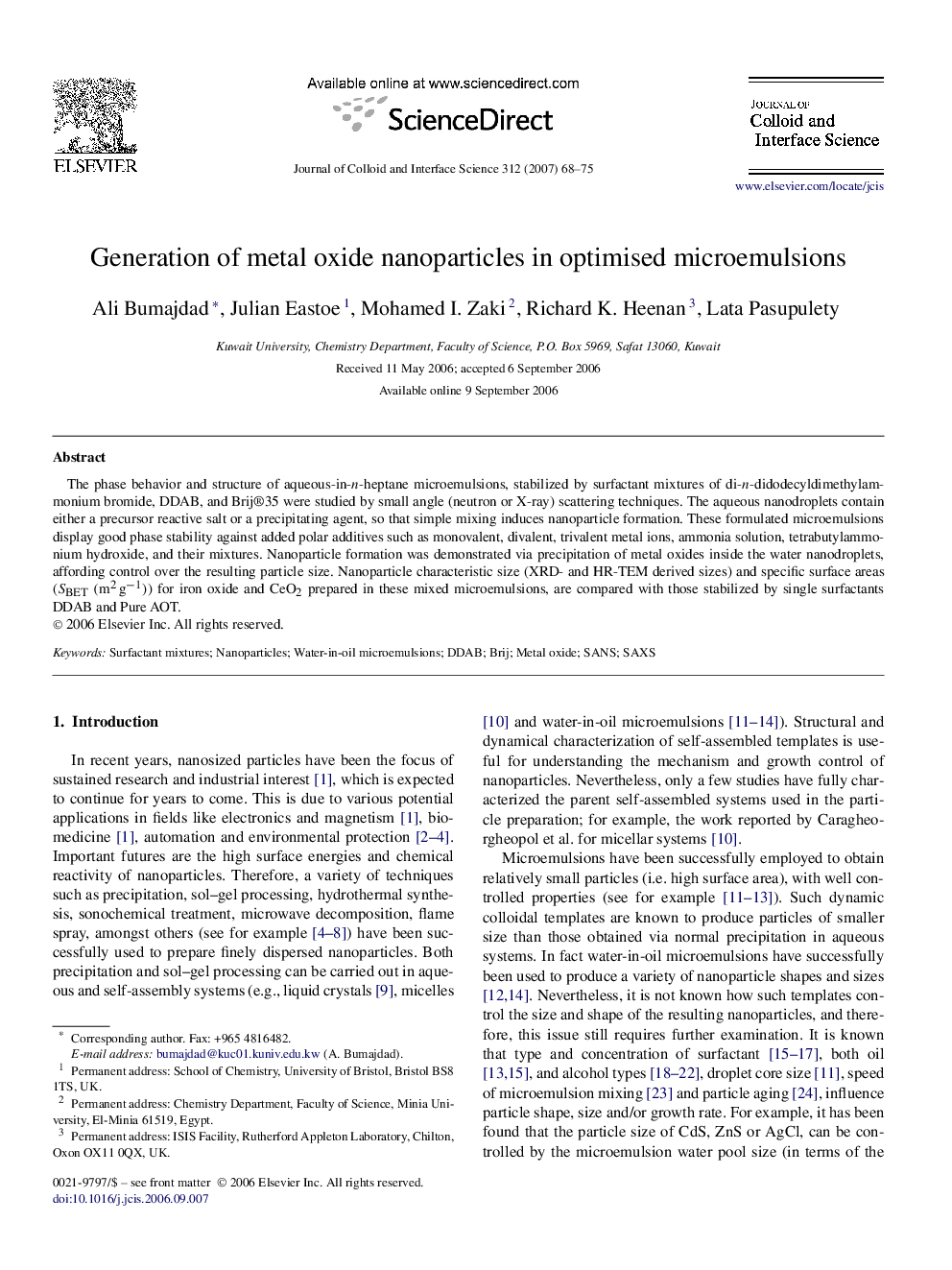| Article ID | Journal | Published Year | Pages | File Type |
|---|---|---|---|---|
| 612690 | Journal of Colloid and Interface Science | 2007 | 8 Pages |
The phase behavior and structure of aqueous-in-n-heptane microemulsions, stabilized by surfactant mixtures of di-n -didodecyldimethylammonium bromide, DDAB, and Brij®35 were studied by small angle (neutron or X-ray) scattering techniques. The aqueous nanodroplets contain either a precursor reactive salt or a precipitating agent, so that simple mixing induces nanoparticle formation. These formulated microemulsions display good phase stability against added polar additives such as monovalent, divalent, trivalent metal ions, ammonia solution, tetrabutylammonium hydroxide, and their mixtures. Nanoparticle formation was demonstrated via precipitation of metal oxides inside the water nanodroplets, affording control over the resulting particle size. Nanoparticle characteristic size (XRD- and HR-TEM derived sizes) and specific surface areas (SBET (m2g−1)) for iron oxide and CeO2 prepared in these mixed microemulsions, are compared with those stabilized by single surfactants DDAB and Pure AOT.
Graphical abstractBoth, small-angle neutron and X-ray scattering (SANS and SAXS) show that the proposed microemulsion system is not perturbed by different salt additives and the outcome of such microemulsion systems are nanoparticles as small as 5 nm.Figure optionsDownload full-size imageDownload as PowerPoint slide
